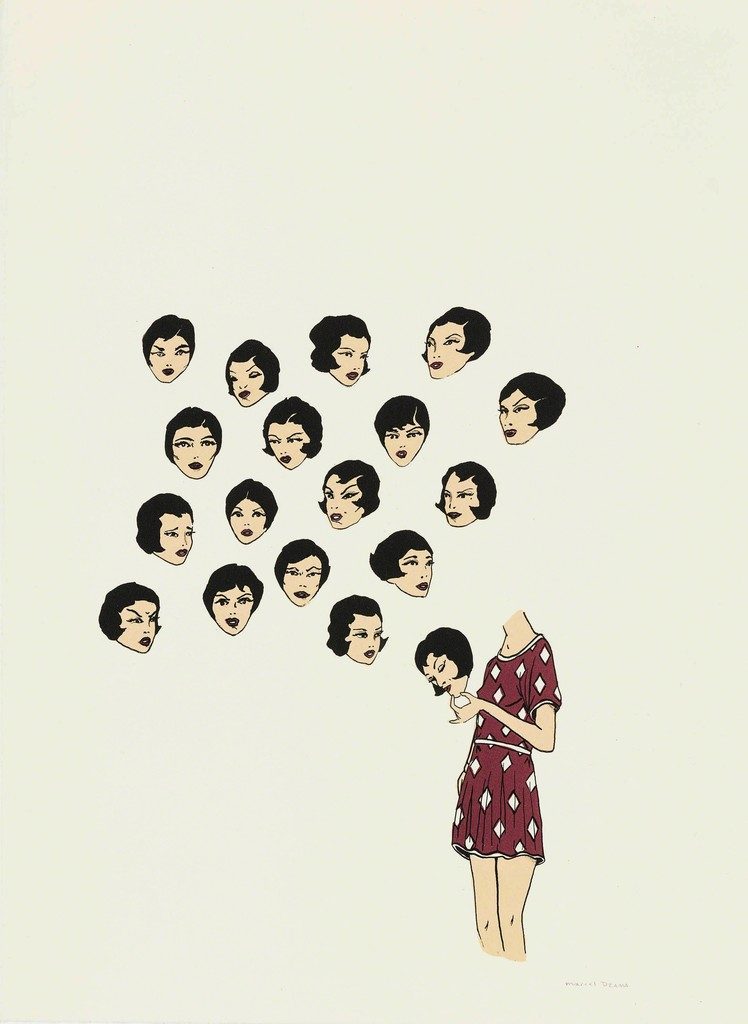Post by HLTD50 student hhhipster
Alex Boya’s short film Focus is a one-minute representation of the experience of attention deficit disorder (ADD) through the arts, specifically, through short film. From the aesthetic choice of animation and the way the audio and visual elements work together to make meaning, a lot of nuance can be understood about the experience of ADD by looking at these aesthetic elements in isolation.
Watching Without Audio: What ADD Looks Like
Initially the viewer’s focus is drawn to the simple mouth flap animations, but is then interrupted by various non-sequitur animations aggressively transitioning and morphing into the next abstract image. The only moments of clarity in animation style an progression is when the character interacts with what can be assumed to be a medicine bottle the person within the video. These stand-out moments of clarity are important to the experience of any illness but also are indicative of how the medicine helps to clear things up for both the viewer and the character. Other visual elements such as colours are used to highlight important things the watcher can focus on, such as the orange colour of the bottle in contrast to the simple black and white colours of the line art. With just the visuals, one can argue that this a striking interpretation of what ADD looks (or might look) like.
Listening to the Audio Without the Visuals: What ADD Sounds Like
As mentioned in class, the short film fittingly lacks focus – as evident in most obviously in the visuals. Without the visuals, this lack of focus is more evident in the way the feminine voice – which should be the focus without the visuals – continuously gets interrupted and displaced from being at the forefront of the sound experience, often getting drowned out by other miscellaneous noises.
Other than the constant speech being interrupted and the miscellaneous shuffling noises, other constant sounds that may catch the listener’s ears are what can be assumed to be the sound of medicine being shaken in its container, the container being opened, followed by the sound of a container being filled with water which is then ultimately gulped down, which leads to the main focus of the sound to be brought back to the feminine voice. The random silences and gaps of noise help to displace the listener’s own sense of clarity and focus, thus invoking a sense of the audio-listening experience of ADD.
Watching with both Visuals and Audio: Representing the Experience of ADD Through Film
In the context of Boya’s short film, the visuals and audio combine to provide context for the other.
For example, without the visuals: Distinguishing the diegetic and non-diegetic noise and sounds would be difficult. Without having the animation of the just lips moving in combination with sound, the viewer’s attention would not be able to be drawn to attempt to understand what the narrator is trying to talk about throughout the short film. Without the progression of the visuals becoming distorted accompanied by miscellaneous noises and distorted voice, the non-sequitur images and sporadic animation style would make no sense. Lastly, without the aid of the dull reds, blues and yellows to make certain elements standout (like the pill bottle, the pills, the water, etc.) the viewer wouldn’t be able to connect the associated sounds with the mimetic images.
Without the audio, it would be harder to distinguish the transitions between the brief moments of clarity among the chaos. All of the miscellaneous noises and sounds would just be unnecessary or random noises with no meaning. From its fast and aggressive non-sequitur animations accompanied by its non-linear soundscape and narrative, these elements are indicative of a chaos narrative.
Chaos Narrative Limitations
Although Boya’s short film does well in situating the viewer in the experience of ADD, especially in the midst of a chaotic everyday experience, it is important to remember that this representation could only be planned out and portrayed this way after some distance is placed from the chaos of an illness experience. In fact, this can be said about any artistic representation of chaos: the act of trying to make a nuanced representation through any medium can only occur after the chaos has passed and some reflection has been done. The act of reflection and trying to understand the chaos itself through mediums like short film assumes that the individual is not within a chaos narrative any longer, or at least are made outside instances of chaotic episodes.
In conclusion, the visual and audio elements within Alex Boya’s short film Focus work together to create meanings and nuanced representations of the experience of ADD. Although it is evident that a lot can be understood about how ADD effects an individual from looking at the elements both isolated and in tandem with each other, it is important to remember that representing a chaos narrative through any medium is done at some form of distance from the actual experience of the chaos.
Focus, Alex Boya, provided by the National Film Board of Canada
